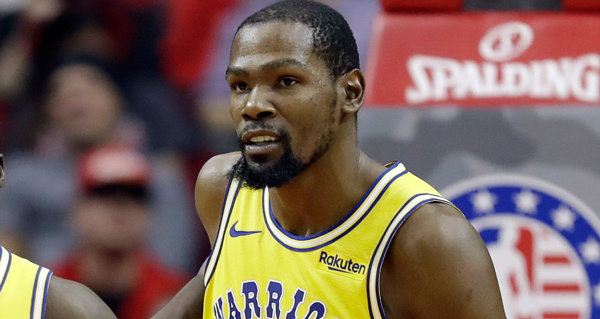For the first time in three years, the NBA is set for a deep and frenzied round of free agency this July. The cap will jump by approximately $7 million, and a number of the big-money deals that were signed in 2016 will mercifully expire.
As Keith Smith expertly outlined here, half the league projects to have some level of cap space come July 1, and after this week’s hyperactive trade deadline there will be multiple teams with enough room for at least one max contract.
The four most universally thrilling dates on the NBA calendar for all 30 teams – trade deadline, lottery, draft and the opening of free agency – have nothing to do with the actual playing of basketball. Those days are captivating because they carry promise and opportunity. Fortunes can swing immediately, much more so than they can during a late-February game between the Suns and Hawks.
One of those days, however, has become more of a trap than anything else.
Believe it or not, true free agency has only been around since 1988 – a period that represents less than half of the NBA’s existence (HQ Trivia nugget: Tom Chambers was the first free agent). While the concept of free agency remains the same, wrinkles to the Collective Bargaining Agreement and team’s willingness to study those details down to key punctuation have changed the mechanism greatly.
Free agency, and specifically the ability to land a superstar, began to take a turn when players became increasingly powerful. There’s no denying that the NBA is a player’s league. It’s acceptable, and almost expected, for a player to take meetings when free agency hits. That wasn’t the case 20 years ago. Reggie Miller routinely waited until August to re-sign with the Indiana Pacers. Could you imagine Klay Thompson waiting six or seven weeks to re-up with the Golden State Warriors?
Player movement and a shift in the way basketball is covered have fostered an increased focus on free agency itself. It’s easier to sell yourself on free agency because of its relative simplicity. A draft pick? You’ve still got to hit on the right prospect and develop him. A trade? You have to find a partner and ultimately give something to get something.
This is where the danger lurks.
Let’s assume every potential max-level free agent becomes unrestricted this July 1. That gives teams with enough cap space the chance at least court a superstar and they’ll be plenty of them – Kevin Durant, Kawhi Leonard, Kyrie Irving, Jimmy Butler and Klay Thompson will all get max money somewhere.
But after those five, there are hazards abound. Do you really want to fill a max slot with Kemba Walker? Tobias Harris? Nikola Vucevic? DeMarcus Cousins?
The players just below the superstar level routinely get overpaid when the market is flush with cash. There will be more space available than true franchise cornerstones in July and the same mistakes that were made three years ago (and back in 2010) will repeat themselves. Those contracts will cripple franchises for years to come, either prohibiting complementary additions or forcing the relinquishment of assets to get rid of what will amount to dead money.
Twenty-six players have earned All-NBA honors over the last five years. Of those players, just five signed with a team as a free agent during that span – LeBron James, Durant, LaMarcus Aldridge, DeAndre Jordan and Isaiah Thomas. You could argue (correctly) that Aldridge and Thomas, while All-NBA players, were not exactly game-changers. The two free agent periods for Thomas in particular came before and after his peak Boston stretch.
A team is more likely to acquire a superstar through the draft or trade than they are using outright cap space. In the cases of James Harden, Paul George, Chris Paul and Kyle Lowry, they were signed to long-term extensions after they were obtained. Butler, Kawhi and Victor Oladipo could all eventually follow the same path.
Shaquille O'Neal to the Lakers, LeBron and Chris Bosh to the Heat, and Durant to the Warriors are the three clear examples of the free agent strategy leading to titles. These were also in their prime future Hall of Famers joining teams that already had at least one other future Hall of Famer in place.
So while positioning yourself to be a player in free agency (i.e. the Knicks and Clippers) sounds great and can be seen as enviable, it’s only the first step towards acquiring a superstar in the most challenging way.



